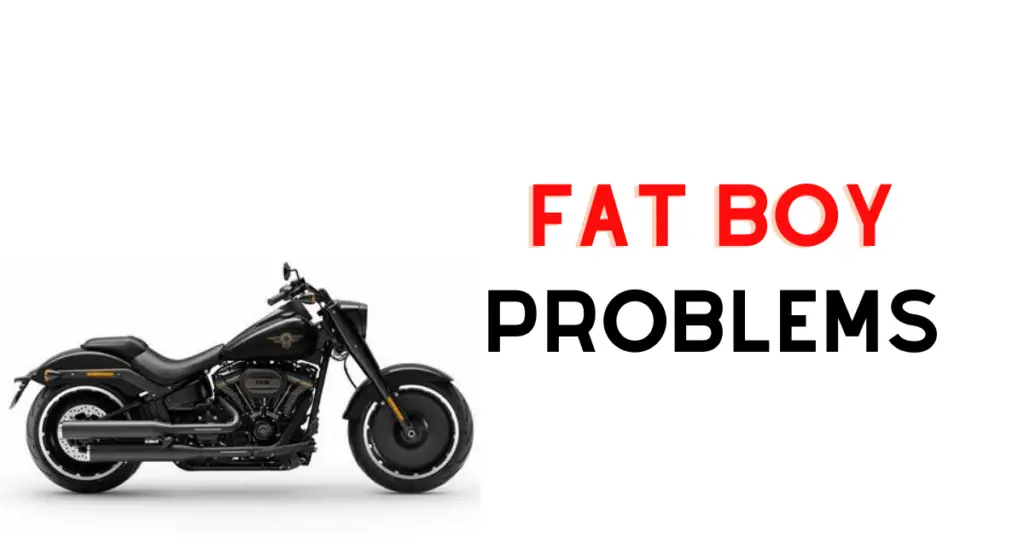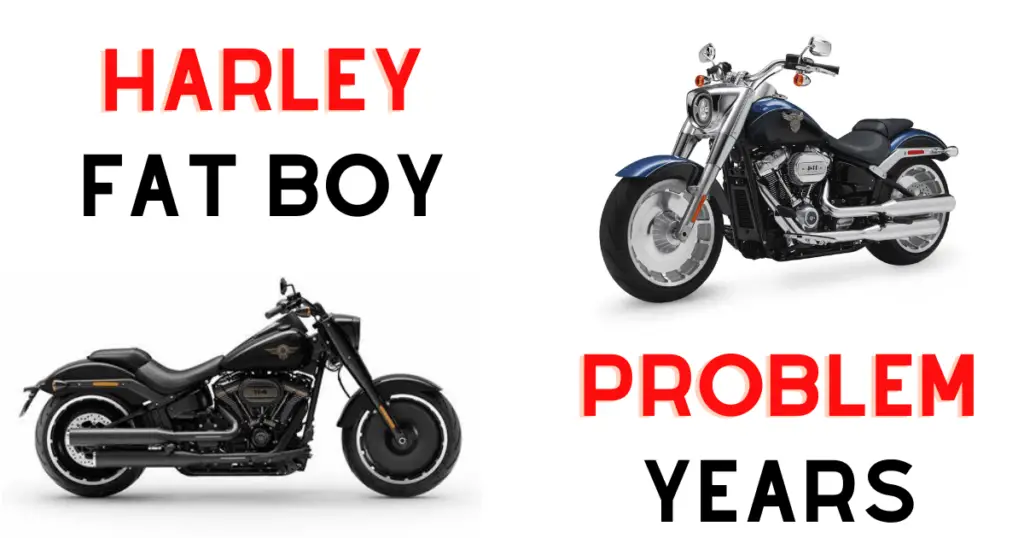The Harley Fat Boy is a classic cruiser motorcycle that has been popular among riders for decades. However, like any other bike, it has had its fair share of problems over the years. Some model years of the Fat Boy have been plagued with common issues, causing headaches and frustration for owners. In this article, we will take a closer look at the most affected years of the Harley Fat Boy and the problems that have been reported by riders.
One of the most common problems reported by Fat Boy owners is electrical issues. Faulty wiring, blown fuses, and malfunctioning brake light switches have been known to cause problems with the bike’s electrical system. Carburetor problems have also been reported in some model years, which can prevent the bike from starting. Other issues that have been reported include transmission problems, engine oil leaks, and problems with the fuel injection system.
If you are considering purchasing a Harley Fat Boy or already own one, it is important to be aware of the most affected years and the problems that have been reported. By knowing what to look out for, you can make an informed decision when purchasing a used Fat Boy and take steps to prevent common issues from occurring.
Related:
– Best Year Harley Fatboy: Unveiling the Top Models in History
– What Year Harleys to Avoid: Comprehensive Guide (Experience)
General Harley Fat Boy Problems

When it comes to Harley Fatboy problems, there are some common issues that riders have reported across different years. These issues can range from engine and transmission problems to electrical and wiring challenges, as well as suspension and handling concerns. Here are some of the most common problems that riders have experienced with Harley Fatboy bikes.
Engine and Transmission Issues
One of the most common problems that riders have reported with Harley Fatboy bikes is related to the engine and transmission. Some riders have reported issues with the twin cam engine, which can lead to engine failure. In some cases, this has been due to a faulty oil pump, which can cause the engine to seize up. Other riders have reported transmission issues, such as difficulty shifting gears or slipping gears.
Related: Harley Cutting Out and Backfiring? Help Is Here!
Electrical and Wiring Challenges
Another common problem that riders have reported with Harley Fatboy bikes is related to the electrical system and wiring. Some riders have reported electrical issues, such as problems with the battery or the charging system. Others have reported problems with the wiring, such as loose connections or faulty wiring harnesses.
Suspension and Handling Concerns
Finally, some riders have reported suspension and handling concerns with their Harley Fatboy bikes. Some riders have reported issues with the suspension, such as a bouncy or unstable ride. Others have reported handling concerns, such as difficulty steering or poor handling at high speeds.
Overall, while the Harley Fat Boy has been a popular cruiser motorcycle for over three decades, there have been some common problems that riders have experienced across different years. If you’re considering buying a Harley Fat Boy, it’s important to be aware of these issues and to take steps to address them if necessary.
Harley Fat Boy Problems By Model Year

2000 Harley Fat Boy Problems
- Electrical Issues: Faulty wiring, blown fuses, and malfunctioning brake light switches.
- Carburetor Problems: Issues leading to starting difficulties.
- Transmission Problems: Difficulty shifting gears or slipping gears.
- Engine Oil Leaks: Common in this model year.
2002 Harley Fat Boy Problems
- Engine and Transmission Issues: Problems with the twin cam engine, including faulty oil pumps leading to engine seizure.
- Electrical and Wiring Challenges: Electrical system issues, battery problems, and faulty wiring harnesses.
- Suspension and Handling Concerns: Bouncy or unstable ride, difficulty steering.
2003 Harley Fat Boy Problems
- Engine and Transmission Issues: Similar to the 2002 model, including twin cam engine problems and transmission issues.
- Electrical and Wiring Challenges: Electrical system malfunctions, battery and charging system problems.
- Suspension and Handling Concerns: Handling difficulties, especially at high speeds.
2004 Harley Fat Boy Problems
- Engine and Transmission Issues: Continued problems with twin cam engines, including oil leaks and cam chain tensioners.
- Transmission Problems: Issues with gear shifting and slipping.
- Fuel Injection System Problems: Reported issues affecting bike performance.
2007 Harley Fat Boy Problems
- Engine Overheating: 1584cc Twin Cam 96B engine prone to overheating.
- Fuel Injection System Problems: Rough idling and stalling issues.
- Electrical Issues: Similar electrical problems as earlier models.
2018 Harley Fat Boy Problems
- Electronic Throttle Control System Issues: Causing the bike to stall unexpectedly.
- Fuel System Problems: Running lean, leading to engine damage.
Worst Harley Fat Boy Years to Avoid and Why
If you are in the market for a Harley Fatboy, it is important to know which model years to avoid. The worst years for the Harley Fatboy, based on reported problems, include 1999, 2002, 2003, and 2004. These model years were powered by Twin Cam engines, which had a reputation for being unreliable and prone to mechanical issues.
Another model year to avoid is the 2018 Harley Fatboy. While this model year was powered by the more reliable Milwaukee Eight engine, it had its fair share of problems, including issues with its electronic throttle control system, which caused the bike to stall unexpectedly. The 2018 Fatboy also had problems with its fuel system, which caused the bike to run lean, leading to engine damage.
In conclusion, if you are looking for a reliable Harley Fatboy, it is best to avoid the model years mentioned above. Instead, consider purchasing a model year that is powered by the more reliable Milwaukee Eight engine, such as the 2022 Harley Fatboy.
Maintenance Recommendations
Optimizing Engine Performance
The Harley Fat Boy is a powerful motorcycle that delivers impressive performance on the road. To optimize its engine performance, riders must ensure that the engine is well-maintained and in good condition. Regular oil changes, air filter replacements, and tune-ups are essential to keep the engine running smoothly.
One of the most important factors that affect the performance of the Harley Fat Boy is the type of fuel used. Using high-quality fuel with the correct octane rating can significantly improve the bike’s power and torque. Riders should also avoid overloading the motorcycle, as this can put unnecessary strain on the engine and reduce its performance.
Routine Maintenance Tips
Regular maintenance is key to keeping the Harley Fat Boy running at its best. Here are some routine maintenance tips to keep in mind:
- Check the oil level and change it regularly. The recommended oil change interval is every 5,000 miles for Harley Fat Boy motorcycles.
- Inspect the air filter and replace it if it’s dirty or clogged. A dirty air filter can reduce the bike’s performance and fuel efficiency.
- Check the tire pressure regularly and ensure that the tires are in good condition. Proper tire pressure is crucial for safety and handling.
- Inspect the brake pads and replace them if they’re worn out. Worn brake pads can reduce the bike’s stopping power and increase the risk of accidents.
By following these routine maintenance tips, riders can ensure that their Harley Fat Boy is running smoothly and efficiently. Proper maintenance can also help prevent costly repairs down the line.